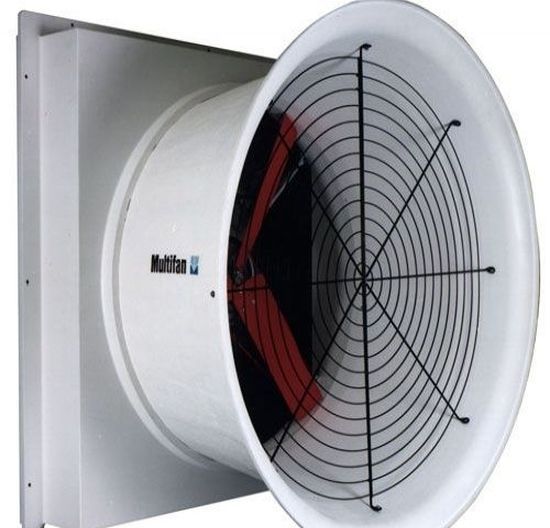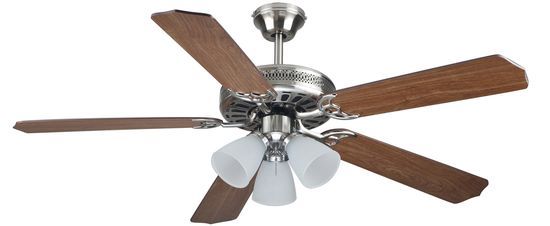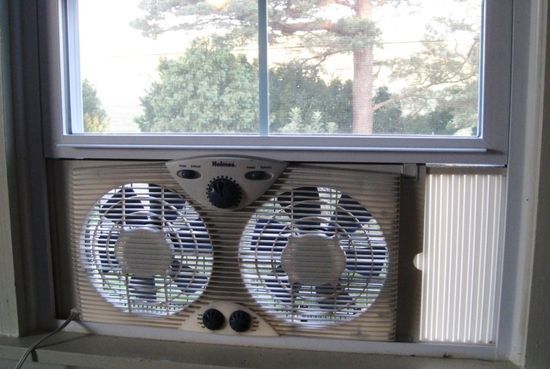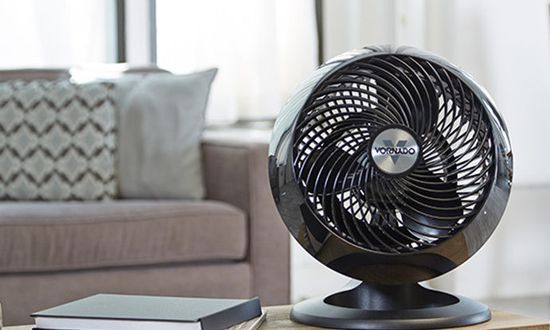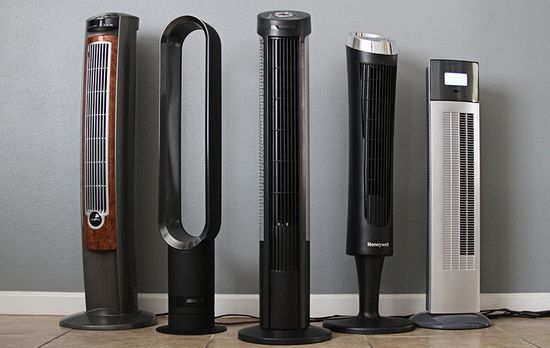Axial fan was invented in Britain in the first half of XVIII century. John Baron created the first prototype of this fan in 1830.
Classification
This list includes:
– wall-mounted;
– roof fan;
– window fan;
– desktop fan;
– tower fan;
– other (cooler, cooling in cars etc.).
Main technical values
Axial fans are characterized by the following parameters:
– rotation direction (left or right);
– number of blades (from 3 to 7);
– blade shape (flat or curved in two directions);
– engine power;
– impeller diameter;
– case type.
Operating temperature range varies from + 40 to -40 degrees.
These fans good provide suction and blowing air. Radial (centrifugal) fan is more effective for blowing air, but it worse sucks air. Using the both types provides the active air circulation. Many models have a reverse mode. But the efficiency in this mode is lower by about 30-40%.
The air flow direction coincides with the axis of impeller. It’s located on the motor axis. Domestic axial fans have a small capacity. Powerful industrial models provides an airflow of up to 50 Pa and are well suited for supplying large air volumes. But aerodynamic resistance of this system should be relatively small. For example, channel-free ventilation systems use these fans very often. Systems with a small length of air duct,for example, in bathrooms, shower rooms or in offices also often use these fans.
The axial fan contains housing, an axial impeller with blades and the engine. The impeller closes by the cylindrical housing.
Rotating blades direct air axially. Airflow almost not spreads in the radial direction. The blades most often are mounted directly on the motor shaft. Some models have a collector before the impeller. It focuses the airflow for improving the fan aerodynamics. Blades tilt angle easy adjust the airflow direction.
Conclusion
The list of main pros includes:
– compact size;
– rotation control;
– low power consumption;
– low noise level;
– easy to use;
– high efficiency compared to other types;
– low cost and ease of design;
– long service life.
– reliable protection of the motor against overload, sparks and moisture.
Of course, these factors should be taken into account when choosing the optimal fan.
In-line axial fans are ideal for air supply and extraction ventilation in the industrial and administrative buildings. Many models additionally cooled further the air.
This video demonstrates the operation of an axial ceiling fan with adjustable rotational speed and blade length.

